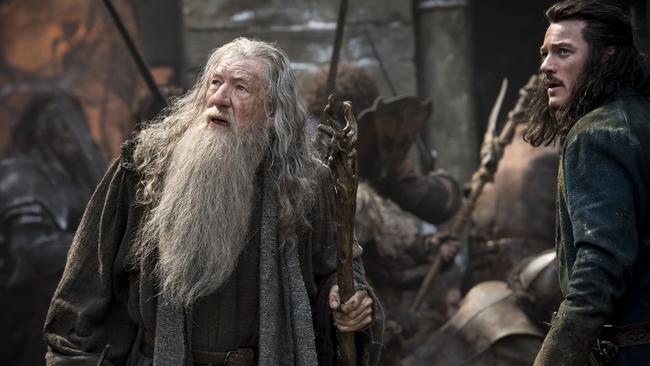From Terry Pratchett to Queen Margrethe: Tolkien‘s fan mail
The Lord of the Rings author JRR Tolkien’s fan mail will be exhibited for the first time next year.

When JRR Tolkien published his first story of a questing hobbit 80 years ago he had no inkling of the fan mail that would follow, or the frustration it would bring.
Long before social media allowed authors to satisfy fans with online postings, Tolkien was beset with messages of adulation from fellow writers, a president’s daughter, a young Terry Pratchett, a future queen of Denmark and Joni Mitchell.
The letters, which have not been seen by scholars or the public, will go on display next year at the Bodleian Library in Oxford in the exhibition Tolkien: Maker of Middle-earth.
The letters and the replies show how Tolkien was at first flattered but eventually overwhelmed in the mid-1960s when sales of The Lord of the Rings trilogy soared.
The first fan letter from someone not already acquainted with the author came from Arthur Ransome, the author of the Swallows and Amazons children’s books. Ransome became immersed in The Hobbit while in a nursing home in Norwich, recovering from a hernia.
“The Hobbit has done a great deal to turn these weeks into a pleasure,” he wrote in December 1937, predicting the book would run into many editions.
Tolkien thanked Ransome for his suggestion that hobbits and dwarfs not be referred to as “men”, adding: “To be fancied by you, that is more than any hobbit could have expected.”
Catherine McIlwaine, who oversees the Bodleian’s Tolkien archive, says he was pleased with the Ransome note. “He was delighted to get it because his children had read the Swallows and Amazons books and kept them even after their other children’s books had been cleared away.
“He didn’t get many about The Hobbit — or not many have survived. Ransome is the first one writing out of the blue saying how much he loved it.”
Iris Murdoch, whose literary fiction is far removed from Tolkien’s fantastical tales, was an established author when she wrote in 1965: “I have been meaning for a long time to write to you to say how utterly I have been delighted, carried away, absorbed by The Lord of the Rings.”
Murdoch, a fellow Oxford university academic who taught philosophy (Tolkien taught language and literature), ended her letter with: “Don’t trouble about answering this, which is simply an enthusiastic and grateful fan letter! … (I wish I could say it in the fair Elven tongue.)”
Pratchett, whose Discworld novels became the most successful fantasy series since Tolkien’s work, was 19 and a reporter for the Bucks Free Press when he sent a letter praising Tolkien’s novella Smith of Wootton Major. “An odd feeling of grief overcame me as I read it,” he wrote.
Singer-songwriter Mitchell made contact when her husband and musical collaborator Charles Mitchell wrote to ask permission to use names from The Lord of the Rings.
The pair wished to call their record company Lorien, after a spiritual character in the story, and to name their publishing company after Strider, one of the protagonists. Tolkien granted permission, but the Mitchells had to write again after discovering Strider was too similar to another publishing company, so they settled instead for Gandalf, the wizard.
Perhaps the most surprising letter came from Margrethe, princess of Denmark, who wrote in 1970 to express “how much pleasure I have derived” from The Lord of the Rings, which she had recently discovered. “It is no exaggeration to say that I have been reading it ever since.”
The princess, who became queen two years later, offered her illustrations for the book in the form of chapter headings. Tolkien, who died in 1973, was delighted with them and they became the basis for images used in the 1977 Folio Society edition.
He also replied to a letter on official White House notepaper. Lynda Bird Johnson Robb, daughter of Lyndon B. Johnson, wrote in 1968: “As a collector of children’s books I am fortunate to have your book, The Hobbit, in my collection … Do you think … you could autograph it? … I can’t tell you how much this would mean to me!”
Tolkien obliged. It may have been Robb’s last chance to use White House notepaper to solicit autographs, as her father’s term in office was about to end.
The Times



To join the conversation, please log in. Don't have an account? Register
Join the conversation, you are commenting as Logout